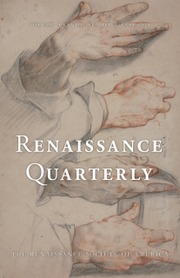Timothy Verdon’s passion for Italian Renaissance sacred art, and the faith that inspired it, is on full display in this splendidly illustrated monograph. A Dominican friar and priest declared a saint by Pope John Paul II, Angelico was a key figure of the Florentine Quattrocentro. Author Timothy Verdon, himself a Catholic priest, art historian, and director of the Museo del Duomo in Florence, examines Fra Angelico’s oeuvre through the lens of art history fused with theology and faith. Akin to the author’s other publications, this book is part of Brepols’s series Arts and the Sacred.
Aptly titled “With Christ Always,” chapter 1 outlines the religious context of Angelico’s art, which, as Verdon demonstrates throughout this study, constitutes a pictorial form of exegesis anchored in scripture and church writings. As a Dominican friar and priest, Angelico also draws upon liturgical practice and sacred theater for a theological program linked to his order’s role in the Observant Reform movement following the Western Schism. Angelico’s artistic milieu, discussed in chapter 2, “Velut Alter Apelles,” after his tombstone inscription, included important early Renaissance figures like Ghiberti, Masaccio, Masolino, and Brunelleschi, with their influence seen in Angelico’s use of perspective and depiction of architectural spaces. Also discussed is his attention to the sumptuous depiction of luxury gold-threaded fabrics, and the spiritual meaning of his marble and stone patterns. There is also an early biographical sketch including his work in miniature.
Chapter 3 traces Angelico’s artistic development from his earliest works to his mature style seen in the 1430s, including the Deposition of Christ and Coronation of the Virgin. Chapter 4, “Angelico the Theologian,” details the scriptural underpinnings of the various Annunciation themes and the 1430s–40s Last Judgement scenes, which also draw upon medieval images, Dante, and fifteenth-century sermons. Here Verdon exalts Angelico’s exquisitely idealized Christ as “the vision of God which is eternal life” (212).
Chapter 5 focuses entirely on Angelico’s famous fresco cycle at Florence’s convent of San Marco (1438–50), sponsored by Cosimo de’ Medici. This elaborate project, comprising an altarpiece and over fifty frescoes, features prayer as the main theme, with figures praying before biblical episodes, thus inviting viewers to participate. Verdon discusses the program’s spiritual intricacies, particularly in the Annunciation and the Madonna of the Shadows, and distinguishes between Angelico’s hand and those of collaborators. Regarding the image of Saint Mark displaying the passage about the angel announcing Christ, Verdon affirms Angelico’s divinity and place in sacred history: “The angel sent by God to announce his Son was a painter called Angelico, and the voice with which he cried in the desert was his brush” (285).
The remaining chapters examine Angelico’s final phase, during which he executed commissions at the papal court in Rome, including Nicholas V’s chapel frescoes depicting Saints Lawrence and Stephen with the Evangelists, framed by monumental architecture reflecting papal taste. Verdon also details the exegetical nuances and pictorial innovations of the Armadio degli Argenti (1450) for Florence’s Church of the Santissima Annunziata, noting that Angelico remained active until his death. In conclusion, Verdon reevaluates Angelico’s place within the Vasarian arc of artistic development as not only a creator of the early Renaissance but a precursor of the sixteenth century’s artistic achievements seen in Michelangelo and Raphael. He extols Angelico’s art as “a foretaste of heaven” (372).
This comprehensive study of Fra Angelico’s oeuvre occupies the intersection of art history, theology, and Catholic faith, reflecting the author’s profound appreciation of his subject matter, which makes for an engaging read. Offering a Vasarian and Catholic vision of art history, the book lacks reference to female monastic orders, which, as eminent scholars such as Sheila Barker, Adelina Modesti, and Sharon T. Strocchia have proven, were central to fifteenth-century Florentine cultural, economic, and religious life, including the Observant Reform movement, in which the work of female orders intersected with that of their male counterparts. This is visible in Fra Angelico’s hallmark depictions of luxury gold-threaded fabrics noted by the author, which were designed and produced by nuns, serving as a source and symbol of Florentine wealth connected to Angelico’s patronage network. That said, with an extensive bibliography rich in primary sources and international scholarly works, this beautifully illustrated monograph offers a foundation for further studies focusing on the relationship between art and religion, ones that hopefully look beyond the confines of hegemonic discourse to expand our understanding of the early modern period.



